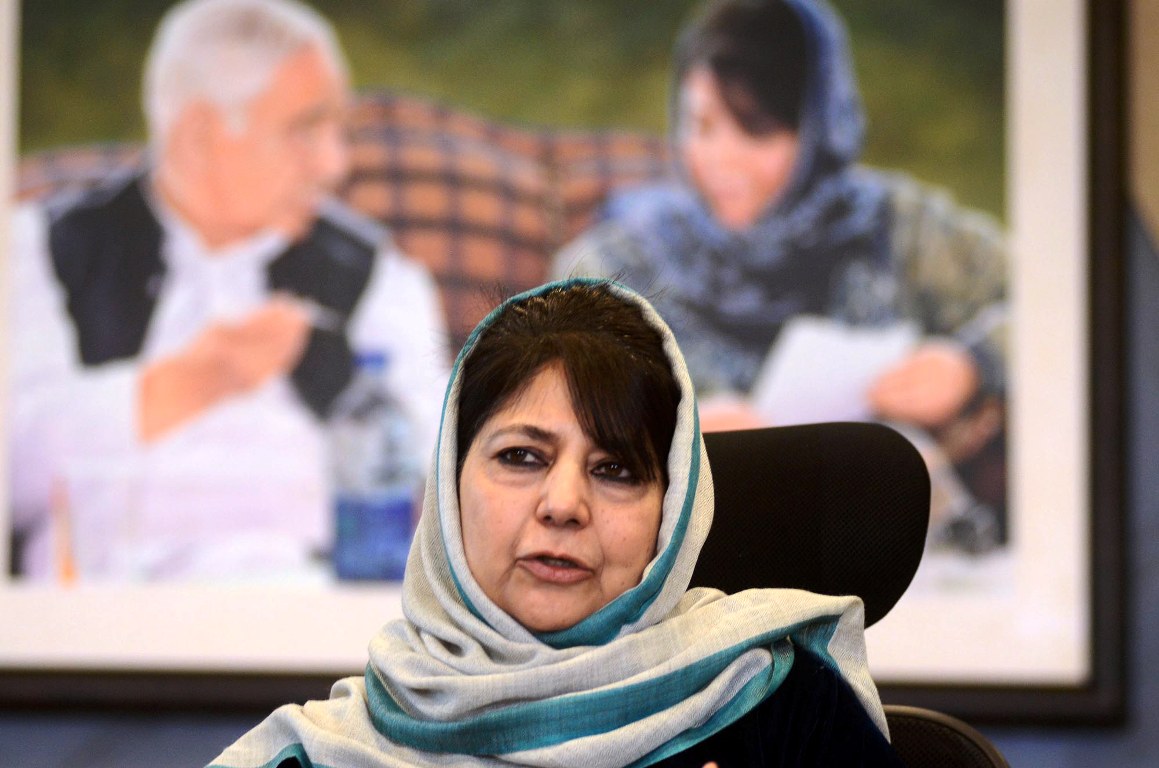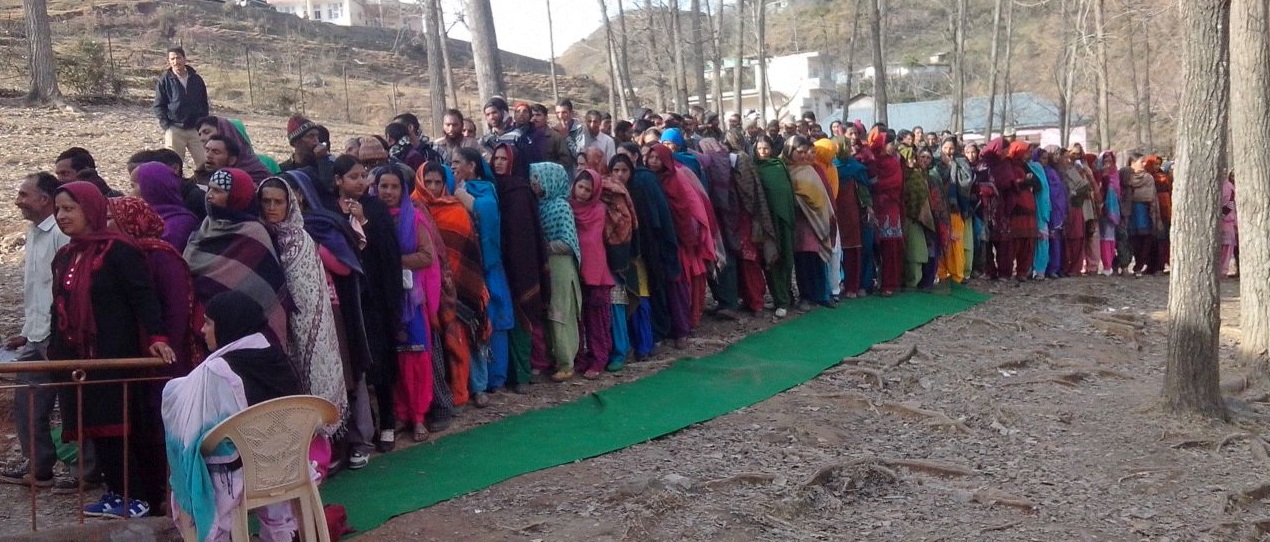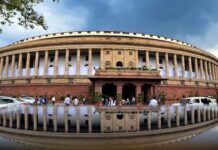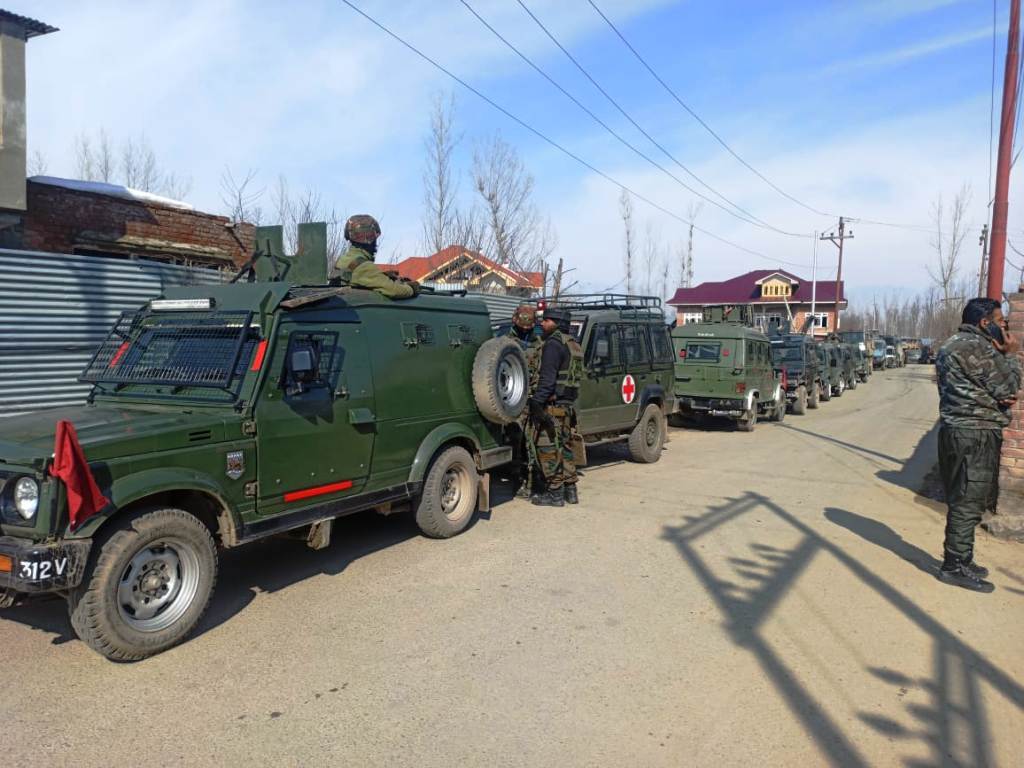KL News Network
Srinagar
An Indian delegation led by former union Foreign Minister Yashwant Sinha Saturday made their Kashmir report public. The group had interacted with people across Kashmir particularly in Budgam, Shopian, Islamabad and Baramulla. The group consisted of Yashwant Sinha, Wajahat Habibullah, Air Vice Marshal (Retd) Kapil Kak, Bharat Bhushan (Editor, Catchnews) and Sushobha Barve(Executive Program Director of Centre for Dialogue and Reconciliation-CDR).
The group has said: “Kashmiris believe that there is a ‘crisis of acknowledgement’ of the Kashmir problem with the Indian state. They feel that India refuses to recognize that Kashmir is a political problem and therefore, requires a political solution. Almost every Kashmiri we met said that there was a need for a one time political settlement and that unless the basic political issue was resolved, death and destruction would continue to visit the Valley with increasing frequency. Kashmiris claim that they have lost faith in India because India has failed them. Now the trust-deficit is widening. Some Kashmiris believe that the Indian State looks at Kashmir only within the framework of national security. They all hark back to the Vajpayee proposal of resolving the Kashmir issue “within the ambit of humanity” as something that had offered a ray of hope. However, they do not believe that the present dispensation in Delhi is interested in that approach.”
Talking about the anger against India, the group according to news agency CNS has maintained that the anger in the rural areas is palpably greater than in Srinagar.
“Kashmiris see the visits of emissaries of GoI and civil society groups as farcical exercises and part of a diversionary tactic to handle disturbances in Kashmir. Because of the record of the Indian State, there is scepticism about even non-governmental initiatives. People even object to the language used to describe the situation in Kashmir- “unrest” they say is the wrong term to use as Kashmir has never been at rest since 1947, “peace and normalcy” are the most abused words in the state as no one knows what they are meant to signify, and while the government talks of “anger and alienation” of the Kashmiris, those are not the issues that need to be addressed – the problem is political and cries out for a political solution. Or, so the Kashmiris claim repeatedly. India, many believe, is deliberately pretending to be ignorant of the aspirations of the Kashmiri people.”
“Most Kashmiris claim that their protests are neither sponsored by anyone nor are their youngsters being paid to come out in the streets. The policies of India to deal with sporadic bursts of protests and anger in Kashmir were described as “time-buying techniques” which have only worsened the situation.”
“The reaction of the BJP leadership to what is being described as the positive call of the Hurriyat to resuscitate tourism in Kashmir is also a sore point with the people. There is a strong sense of discrimination. Many examples are cited. However, this discrimination is cited across the board with an allegation of discrimination against Kashmiris even in routine administration like the issue of passports.”
“There is an increasing lack of fear in the youngsters-or so they claim-in confronting the security forces. Today, they claim, they take death in their stride. “The best thing for which we are thankful is that your use of weapons, including pellet guns has killed the fear in us. We now celebrate the martyrdom,” one youngster said. Some amongst the youngsters say that they do not want to talk to India – hatred towards India has grown. They claim that they have lost all faith in the various delegations and groups that visit Kashmir. Indian civil society remembers Kashmiris only after prolonged protests, one of them quipped. Others said that those from Indian civil society organizations who come to Kashmir quickly get discredited as quite often despite their best intentions nothing good comes of their efforts.“This time we picked up stones, the next time around it can be much worse,” one of them said.
The vocabulary of the youth has also changed, as has their psychological attitude towards India. They talk of curfew, hartals, martyrdom and Burhan (Wani). Other youngsters, however, say that since 68 per cent of Kashmir‟s population comprises youth, India should talk them. However, they suggest that before that, the pellet victims and youngsters in jail should be released, or their anger will continue to grow. They want platforms to be created for Kashmiri youth to express themselves and suggest that a beginning could be made by allowing the formation of students‟ unions which are currently banned. Some of them said that there is nobody who looks after the welfare of youth living in farflung and rural areas.
People believe that the present lull in stone-pelting and street protests will not last for long. They say that stone pelting is the result of not allowing any assembly of people. People ask, “How do Kashmiris voice their feelings, vent their anger or grievances?” There is a strange apprehension among the Kashmiris that something untoward is going to happen once spring sets in. What happens in the period after April 2017 is expected to be much higher in magnitude and intensity.”
The Group according to news agency CNS in its report has observed that: “the state level political parties are seen to have a purely utilitarian function. They have very little to do with the mainstream sentiment in Kashmiri society and are seen as instruments for getting civic and other facilities. Otherwise they enjoy little credibility as far as representing the political sentiments of the people is concerned.” “Kashmiris do not believe that the local parties in the State can resolve the political issue of Kashmir. They point out that this complex issue has to be addressed by all the stakeholders – India, Pakistan, and Kashmiris of the entire erstwhile kingdom of Jammu and Kashmir. Unless the three stakeholders address the issue, they believe, it cannot be resolved. There is also a belief that for the sake of peace, all three stakeholders will have to give up their rigid stands and show flexibility. And if no flexibility is shown, the Kashmiris will continue to suffer. However, they also think that it is India which will have to show the political will to address the political issue of Kashmir – the initiative has to be from India as the largest country in the region and it must be able to show boldness in addressing the issue.”
The Group has said that people in Kashmir look Indian media as a TRP House that use Kashmir to raise their TRP’s.
“Revocation of controversial laws like AFSPA and PSA may cool down tempers but do not mistake that for a permanent solution. People we talked to suggested that there can be no permanent solution to the Kashmir issue unless Pakistan and the leadership of the All Party Hurriyat Conference are involved in a dialogue. There are some, however, who say that it was no point talking to the Hurriyat leaders as they are nothing but a creation of the militants. Therefore, a solution will come only by talking to the militants. It was even suggested that if a real dialogue has to take place, it must begin with a Track-II process with Syed Salahuddin.
“Talking to Syed Ali Shah Geelani or the others here will not help. People are with the Hurriyat because it represents the militant sentiment. The day the Hurriyat leaders stop representing this sentiment, they will be changed. So talk to the people who are responsible for most of the violence here, even if that means engaging even Hafiz Saeed unofficially. After all, our kids are going to his door,” a Kashmiri politician known for his radical views suggested.
Kashmiris are unequivocal in their criticism of those in the government who claim that Pakistan would be divided into ten parts or those who distort the statement of Hurriyat leaders to suggest that instead of inviting tourists they wanted to invite terrorists. They feel that such statements and their being played up in Indian media do more harm than good-as this aggravates the situation on the ground. Three things, it was suggested, needed to be done immediately: Improve the human rights situation in Kashmir. A multi-dimensional dialogue for settling the Kashmir issue should be started between India and Kashmiri leaders and between India and Pakistan. Institutionalize the process of interaction between civil society groups from the rest of India and the Kashmiris by involving more opinion makers and concerned citizens. It was also suggested that India should not oppose the China Pakistan Economic Corridor as CPEC is seen by Kashmiris as revival of the Silk Route of yore. In fact, India should participate in it so that the Kashmiris can benefit from it. Overall, the dominant feeling one came across was that no amount of financial packages will help resolve the political issue of Kashmir.
The overwhelming feeling was that the only context within which the Kashmir issue can be settled is the one laid out by former Prime Minister Atal Bihari Vajpayee-of resolving the Kashmir tangle “within the ambit of humanity.”
The Group in its report has said Sikh and Shia communities’ suggestions pertaining to the Kashmir problem were similar to that of others though they had some community specific issues which they wanted highlighted. Increasingly, the Sikhs say, their children seem to have no affinity with the Valley and that a silent migration of the community is under way.The Shia’s lamented that Muharram processions routes are banned in Budgam since 1990. The Aukaf land that belongs to Shias is occupied by the Army in Budgam. The Army has in fact built a memorial for Major Somnath on the Aukaf land owned by the Shias and several complaints from the district administration have elicited no response.
“Along with the recommendations made in our first report we have the following suggestions for the State and Central Governments Improve the human rights situation in Kashmir & encourage more humane attitude by the security forces with the public The State Government already has before it proposals regarding police reforms of Committees set up by MHA. These may be considered soon. Need to resuscitate democratic linkages between the Government and the Citizenry. For example all the Commissioners of the J&K State Information Commission have retired and are not yet replaced. Urgent psychological counseling to be provided to minors being released from detentions. We suggest that a plan for counselling is put in place for this; based on the experience of similar efforts in 2010. Allow assemblies/meetings of people for holding discussions on subjects that are of concern to the common Kashmiris and for free expression of ideas and views. Interface between civil society groups and district civil and police officials for confidence building should be initiated government agencies designed to promote tourism, industry and agriculture production move to disinvestment and promotion of private investment through design of suitable projects and finance. The agenda of alliance of the BJP-PDP Coalition Government commits to a dialogue with all the stakeholders including the Hurriyat’s. We recommend that such a multi-dimensional dialogue is initiated at the earliest. As for an India Pakistan dialogue, it is contingent upon several other issues.” (CNS)















